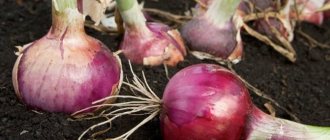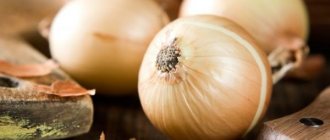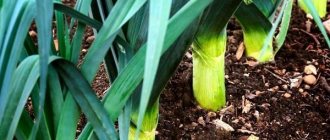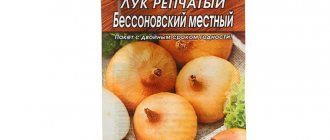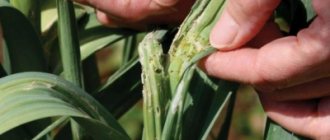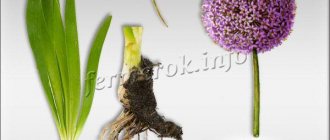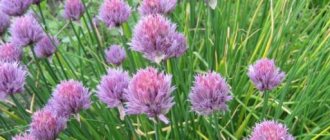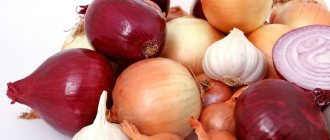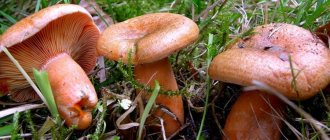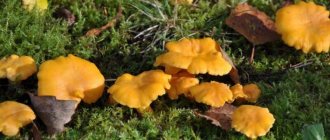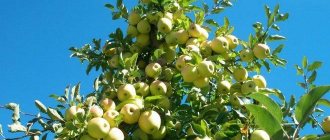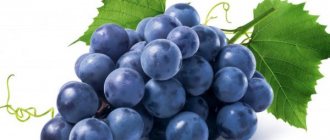Varietal diversity of onions: what types are there?
Adopting the experience of their ancestors, preference is often given to the same varieties of onions when planting a vegetable garden. The time has come to change stereotypes, improve and achieve new results, because the dish can sparkle with new flavor notes if you use Setton or Leek instead of the usual onion. Moreover, in central Russia, a large number of varieties can be planted, as practice has shown. Either salad or green. And then we will find out where which species can grow.
Onions in the garden
The most popular onion varieties
All varieties of the crop differ not only in taste, but also in planting rules, ripening period, and yield.
Onion sets
- Chalcedony grows in open ground and is very popular among gardeners in the southern regions of Russia. Suitable for growing feathers and root crops. The ripening period (from planting to harvesting) is 95-110 days. An average of 4 kg is taken per square meter, with the marketable weight of one small specimen being 85-100 grams. Sometimes there are onions weighing up to 400 grams. There is good immunity to peronospora and vulnerability to neck rot. Taste: pleasant with a slight spice.
- Stuttgarter risen is early ripening, from sowing to harvest it takes about 3 months. Round-flat onions weigh 150-250 grams on average, but there are also giants weighing up to 350 grams. The plant rarely shoots arrows and does not become covered with spots characteristic of downy mildew. Taste: pungent with a pungent aroma.
- Souball is characterized by large round bulbs with an average weight of up to 200 grams. The root crop ripens in about 100-110 days and produces a good harvest. Taste: delicate with a slight hint of spiciness, used mainly for preparing salads.
Onions (turnip)
- Zolotnik is a mid-season species , characterized by medium-sized rounded bulbs weighing about 60-70 grams. Used for greens and growing turnips for planting next season. The center is white and juicy with a slight tang.
- Shaman is an early ripening variety, ripens in 86-95 days. The root vegetable has an elongated shape, pink-red and quite juicy in the middle. The average weight of a turnip is 55-65 g. Advantages: stable high yield, high taste. Can be stored for a short time.
- Oporto ripens in 98-107 days and is a mid-season species. The weight of the turnip reaches 270-300 grams, the shape is regular round. Advantages: high yield when using seedlings, immunity to diseases and pests, retains its presentation for a long time. Its taste qualities allow it to be used for all types of processing.
Varieties of salad onions
- Exhibition ripens in about 130 days, tastes very sweet with abundant juice. The turnips are round and very large, reaching 550 g, but there are also specimens weighing 700-800 g. The only disadvantage of the culture is its short storage period (no more than 3 months).
- Yalta is incredibly popular due to its excellent taste. The plant ripens in 138-150 days, the turnips are large, flattened, purple in color, reaching an average of 200 grams. In the middle zone, the variety can be grown using seedlings. Onions can be stored for up to 4 months.
- Ermak is a record holder for ripening ; the harvest is harvested 75-95 days after sowing. It has good immunity and a long shelf life (until the next season). The gastronomic feature is a soft juicy structure with a slight spiciness.
Red onion
- The crimson ball ripens in 85-95 days and produces a stable harvest every year. The dark purple, rounded turnips live up to their name. The center is juicy with a pleasant taste, offset by a slight tangy flavor. The drawback is the short shelf life (up to 4 months).
- Campillo F1 is a red onion hybrid that has a round shape with a dense center and a pleasant purple hue. The advantage is that the pigment does not transfer to kitchen utensils and fabrics. Taste qualities: delicate structure with abundant juice release, clearly noticeable sweetness. It can be stored for a long time without losing its properties.
- Retro is famous for its high yield and rapid ripening (up to 90 days). The center is tender, dark red with white stripes. Onions are very sweet without any pungency, so they are even added to children's salads.
White onion
- Albenka is distinguished by its rapid ripening (up to 95 days) and interesting taste qualities that combine light spiciness and sweetness. Grown for greens and onion sets. Not suitable for long-term storage.
- White globe has good seed germination and rapid ripening. Harvesting can be done 95-105 days after planting. A round, slightly elongated turnip weighs 160 grams on average. The variety is characterized by a high stable yield and immunity to fusarium.
- Sterling represents a group of white onion hybrids with a ripening period of 110-120 days. The weight of an average turnip is 120-200 grams. Round shape with white husk. The center is soft and juicy with an unusual taste, not similar to other types. The storage of root crops is short (3-5 months), but when grown, immunity to many diseases and pests is noted.
Purple onion varieties
Purple onions come in several varieties:
- Crimson Ball - the heads mature in 12–16 weeks. The seeds do not germinate well in open ground, so it is better to plant the variety in seedlings, through sowing, or to grow it in a greenhouse. Crimson Ball does not grow in shady areas and high humidity. It is possible to obtain fruits with a characteristic sweet taste only in a greenhouse.
- Yalta - suitable for cultivation only in the southern regions. The variety is very capricious, and it will not be possible to get a full harvest without special fertilizers.
- Aleko - differs from previous varieties by the presence of a blue tint on the cut. It can develop normally in any climatic conditions. Ripens in 10–12 weeks. In the southern regions it is grown by seed through direct sowing, in the northern regions - through seedlings or in greenhouses. The seeds form three sets in the ground, tightly fused together.
- Black Prince - tastes closer to regular onions. It differs from other varieties in its relatively good shelf life and transportability. In the southern regions it is grown by seed through direct sowing, in the northern regions - only in greenhouse conditions.
- Yukont - the variety has good keeping quality. The fruits have a semi-sharp taste. A good harvest can only be obtained in the southern regions and the middle zone.
The best bulbs for the Moscow region
- Centurion has gained popularity all over the world due to its high taste. The rounded-elongated turnip reaches a weight of up to 110 grams . Productivity is average, but stable (up to 3-4 kg per 1m2). Advantages of the variety: not subject to the release of arrows, long shelf life (up to 8-9 months), resistance to decay. The root vegetable has a pungent taste.
- Hercules is considered a prolific crop, yielding from one square meter to 8-9 kg of root crops. Breeders, working on a hybrid, initially set the task of obtaining long-lasting onions. The result exceeded expectations - good resistance to diseases, long-term storage without loss of beneficial properties, resistance to the vagaries of nature. The weight of the turnip is up to 120 grams, the taste is excellent (mild spiciness, juiciness, moderate sweetness).
- Sturon is a hybrid grown by Dutch breeders. As a result of painstaking work, a variety was obtained that is resistant to diseases and pests, maintaining its presentation well for 9-10 months. The plant matures in 100-115 days, the weight of an average turnip is 120-150 grams. Gastronomic feature: suitable for all types of processing, neutral flavor notes with a slight spice.
By following all the recommendations for soil preparation, planting and care, you can harvest quite a bountiful harvest of onions from the beds. And even celebrate the giant root vegetable every year, beating your own records.
There are several varieties of onion plants that form commercial turnips. Their basic biochemical composition is similar, but there are some differences. Red onions have not only colored dry scales, but also pulp. The active substances contained differ in composition from the yellow and white types. Its high taste and nutritional value have contributed to its widespread use in cooking. The beneficial properties allow the vegetable to be used for medicinal and cosmetic purposes.
Main characteristics
Purple onions are also called blue or red. In root vegetables, not only the outer dry shells are colored, but also the pulp of the inner scales. They may have a pinkish tint, light with veins. Root crops are not large in size. Average weight 60-80 g.
Purple onions are thought to have a sweet taste, but breeders have developed some varieties that have a spicy to mildly spicy flavor. Root vegetables contain a lot of sugar, up to 10%. They are given their spiciness by essential oils, which prevent sugar from appearing.
If their quantity in fruits is reduced, then the root vegetables have a sweet taste. If the vegetables have a lot of oils, then the taste is pungent, the same as that of yellow onions.
All varieties are heat-loving and are recommended to be planted in the southern regions. In the northern regions, early crops with appropriate characteristics are cultivated. It is recommended to organize greenhouses or film tunnels for them.
View this post on Instagram
Posted by HOME IS WHERE THE FAMILY IS (@ekaterinapurnova) Aug 26, 2021 at 9:41 am PDT
In addition to sugar and anthocyanin, root vegetables contain large amounts of vitamin AA, group B, ascorbic and nicotinic acid. There is calcium, sodium, phosphorus, magnesium, and some iron.
The fruits have antimicrobial characteristics and are used as a preventive measure against respiratory diseases. Vegetables look beautiful in salads. What varieties do gardeners grow?
Origin and description of culture
Central Asia is considered the birthplace of the culture. Then red onions were bred in the Nikitsky Botanical Garden. The varieties growing between Alushta and Yalta are considered delicacies. Today it can be grown everywhere; many hybrids with improved characteristics have been created.
Red onions get their name from their red-violet color. The outer dry scales are intensely colored, and the flesh is lighter. The shape of the turnip is similar to a regular turnip; it can vary depending on the variety. The bulb reaches 15 cm in diameter, the feather is long, the peduncle grows up to 1.5 m in height.
The nutritional value
For 100 g of onion pulp there is:
- proteins – 1.4 g;
- fat – 0.1 g;
- carbohydrates – 9.1 g.
The energy value depends on the variety. The average amount of calories is 42 kcal per 100 g. The calorie content of red onions is not the lowest among similar crops. But thanks to its biochemical composition, which provides beneficial properties for burning fat deposits and reducing fat absorption, it can be used in dietary programs for weight loss.
Chemical composition
The properties and effects of the plant on the human body are explained by the content of various active substances in it. Red-purple onions contain:
- vitamins A, C, E, H, PP, group B, β-carotene;
- minerals – calcium, iron, magnesium, sulfur, chromium, selenium, zinc, copper;
- quarcetin, which has a wide spectrum of action;
- anthocyanins, which cause the purple-violet color;
- antioxidants that slow down the aging of the body;
- essential oils;
- organic acids.
Difference from other types of onions
The difference between this species and the white or yellow vegetable is small. The main difference from the usual one is the reddish flesh with a purple tint and dry scales. The biological value is higher in some respects. Red onions differ from white onions in having more fleshy flesh and a sweeter taste. The culinary uses are less varied than those of the yellow species. Mainly used for preparing salads, marinades, and fresh sauces.
Varietal diversity
Taste, appearance, and growing season depend on the variety. The red vegetable is considered sweeter, with a subtle taste, but it is no less spicy than the regular onion vegetable. This mainly depends on its variety, territory and growing conditions.
- Black Prince – mid-season, long-lasting, semi-sharp;
- Crimson ball – early ripening, consumed fresh;
- Retro – early, high-yielding, sweet in taste;
- Greatful is a mid-season hybrid that can be stored for a long time;
- Yukont - ripens quickly, has good keeping quality, and has a sharp taste;
- Campillo is a hybrid, has a mild taste and is resistant to diseases.
Description and composition of purple onions
Lilac or Yalta onions have unique properties. It differs from standard onions in its sweet taste. Most varieties of blue onions offered in markets are not a true Yalta variety, but belong to steppe crops that have standard taste, with a characteristic burning sensation.
The Crimean variety of onions was developed by crossing Portuguese and Spanish onions. Appeared in 1950. They began to cultivate it in the Nikitsky Botanical Garden. On the territory of Crimea there was a Pilyaki volcano, after the eruption of which a large amount of minerals remained in the soil.
The territory from the mountains to the sea is covered with rocky volcanic soils. Underground there are spring water sources that feed the soil. And seabird droppings serve as fertilizer. Due to the presence of rocky soil, onions ripen in this region even at night. The stones bask in the sun during the day and give off heat at night, which increases the sugar content of the fruit.
The real Yalta variety is obtained only in several regions of Crimea:
- village of Opolznevoye;
- the village of Blue Bay;
- Zaprudnoye village;
- Nikitsky Botanical Garden.
Possible harm and contraindications
Red-purple onions can only cause harm if consumed in excess. It should be eaten with caution and in small quantities for asthma and hypertension. There is a risk of developing diarrhea. It is undesirable to eat turnips grown with the use of pesticides and chemicals.
Contraindications must be taken into account:
- diseases of the liver, kidneys, gastrointestinal tract;
- increased acidity of gastric juice;
- bloating;
- pancreatitis;
- colitis;
- allergy;
- some skin diseases;
- individual intolerance.
How to store bulbs?
Any room with constant humidity and air temperature is suitable. Bulbs are stored well if the temperature does not exceed 18 °C and the air humidity is kept at 60%. There are different ways to store the harvested purple onion varieties.
Purple turnips can be poured into old tights and hung in the pantry, or braids can be made. Red (purple) onions, collected in beautiful bunches, can be used as a decorative element when decorating a kitchen in a country house or in a city apartment.
It is better to store a large number of purple heads in boxes (wooden, plastic, baskets) or on special racks. During storage, red turnips must be periodically inspected; specimens with signs of rotting must be removed.
Uses of red onion
In cooking it is used mainly fresh, this is how all the beneficial substances remain in its composition. The vegetable can be added to salads, cold appetizers, grilled, or baked in the oven. Despite the fact that heat treatment destroys some of the beneficial substances, it is stewed, boiled or baked onions that should be eaten to reduce sugar and normalize the functioning of the pancreas. Cooking in this way allows it to be consumed by people with high acidity in the stomach.
Fresh, beautifully shaped bulbs are used to decorate salads and other dishes. Flowers cut from turnips using the carving technique look realistic and do not require food coloring to diversify the color scheme. They are often made for buffets and holiday tables.
Sweet onions are suitable for feeding children. The juice irritates the gastric mucosa less, and the beneficial properties are no less pronounced, vitamins and minerals are fully present. Sweet varieties are also desirable in the diet of pregnant and lactating women.
Widely used in folk medicine. Proven recipes have been developed for ARVI, cleansing the liver, removing worms from the body as a diuretic. Onion juice is used for otitis media. The pulp from the pulp helps relieve pain and initiate recovery processes for injuries and sprains. Onion decoction is used for calluses. Red onion restores ligaments, which is necessary during heavy physical activity. The high amount of antioxidants makes the vegetable necessary for maintaining youth, health and beauty.
The benefits of onions are known to everyone. There are many varieties of this vegetable, differing in properties, appearance, and color. Purple onion is known for its beneficial effects. This vegetable is used in nutrition and folk medicine. What vitamins are in onions is described in the article.
Features of cultivation
Sweet onions are grown mainly as seedlings. Sowing of seeds occurs at the end of February or beginning of March.
Subtleties of landing
The seeds are soaked in water, slightly dried and planted in loose, fertile soil. A distance of 2–3 cm is maintained between the “beds”. The containers with seeds are covered with glass or plastic film. The room temperature should be in the range of +22…+27 °C.
When shoots appear, the film/glass is removed. The containers are moved to a cooler place. The optimal temperature range is +10…+13 °C. Periodically, the seedlings are watered and thinned out.
Caring for onion plantings
Seedlings are planted in open ground in early May. If the weather is cold and damp, you can postpone the procedure for 7-10 days.
Before planting in open ground, seedlings are watered abundantly. The roots and leaf parts are cut to a third of the length. Such manipulations increase the survival rate of seedlings planted in the ground.
Further care involves periodic watering and fertilizing. At first, onion beds require intensive moisture; gradually the interval between watering increases. A few days before the bulbs begin to ripen, watering is completely stopped.
Fertilizing with organic matter is carried out in May-June. Potassium-phosphorus fertilizers are applied to the soil during the formation of bulbs.
Crop care involves watering, fertilizing and removing weeds.
Harvest and storage
Leaves that have turned yellow and fallen to the ground are a sign of the technical maturity of the bulbs. The harvested crop must be thoroughly dried. Even slight moisture under the husk can lead to rot.
The harvested purple onion should be stored in cardboard boxes or wooden boxes. The room should be dry, cool and periodically ventilated.
The harvested crop must be thoroughly dried.
Blue onions have interesting taste qualities. At the same time, the vegetable can be used not only for preparing culinary delights, but also to strengthen the immune system and prevent a number of pathologies.
Description
Onion is a plant that grows in many countries. There are about 400 species of it. Among them are red onions, which have a rich purple color. The shell of the vegetable is shiny. The culture is known for its enormous benefits.
What is the difference between purple onions and regular ones? Their difference lies not only in color, but also in taste. The difference is also noticeable in properties. Each vegetable has its own effect on the body. For example, red onion is ideal for fighting cholesterol. And the white variety helps with anemia due to its iron content.
Differences between Yalta and other varieties
To avoid becoming a victim of scammers, it is important to know which onion is sweeter - white or red. If the second implies the Yalta variety, then it is undoubtedly sweeter. However, it is necessary to know the differences between this variety and those that are similar in appearance but have a pungent or bitter taste.
The Yalta bulb is flat or round, with thick inner layers. This feature will help distinguish it from similar ones; other varieties have thin inner layers.
The color of the layers is also characteristic: white, with a purple border, while other layers often do not have a border.
The red and white fruits differ in:
- external signs;
- effects on the body;
- shelf life.
Did you know? Residents of Ancient Greece believed that onion culture was sacred, so during the festivals they tried to present the largest fruit as a gift to the gods.
First of all, these types of vegetables differ in taste - white is sweeter than red. The color scheme of the fruits is also different - white varieties have a cream tint, while red varieties are painted in purple-pink tones. The shape of the vegetables also has visible differences: the white one has a clear outline of a ball, and the purple fruit can be oblong, spherical or have a shape flattened at the edges.
Red (purple) onions can lower blood sugar levels, so they are indicated for diabetes. Eating white onions will help lower cholesterol levels.
White onions have a short shelf life, which reaches a maximum of 3 months from the date of collection. The vegetable is highly susceptible to rotting, so this variety is eaten first. Purple onions have a shelf life of up to 6 months.
Beneficial features
This variety of vegetable has reddish flesh and purple skin. Near the husk there are especially many useful properties. Therefore, it must be cleaned carefully. If you cut off a lot, some of the valuable substances will be lost. What vitamins are in onions? The presence of useful components is associated with the chemical composition:
- The variety contains 2 times more antioxidants compared to the light variety. The vegetable heals the body, protects against cancer and diseases of the heart and blood vessels.
- The benefits of red onions come from anthocyanins. A person needs the components to cope with inflammation and bacteria. The vegetable is used to prevent diabetes and nervous pathologies, oncology.
- This onion contains a lot of quercetin. This component has a diuretic, anti-inflammatory, antihistamine effect. With the help of this red vegetable, the intensity of allergies, swelling, and spasms is reduced.
- Thanks to sulfur compounds, cysteine is produced, an amino acid that reduces the concentration of toxins. The component protects the body from the accumulation of “bad” cholesterol. Sulfur supports the functioning of the heart and blood vessels.
- The benefits of red onions are due to the presence of chromium. The component is able to lower the concentration of sugar in the blood. As a result, the cells are susceptible to insulin, and the risk of diabetes is minimal.
- The vegetable is a natural antiseptic. The juice has a disinfecting effect and can destroy germs and viruses. Onions help strengthen the immune system. It is used in folk recipes for the prevention and treatment of colds, bronchitis, and pneumonia.
- A few tablespoons of juice are enough for the acidic environment of the stomach. The vegetable is useful for secretory deficiency.
- Onions can normalize metabolism. As a result, digestion is restored.
- The vegetable in its raw form allows you to remove worms. It should be consumed daily before meals.
- A mask based on the product restores hair growth and eliminates hair loss. The gruel is used to treat insect bites; it will eliminate itching and redness.
- Compresses restore ligaments. The chopped onion is mixed with sugar and applied to the affected area.
- To soften calluses, apply husk compresses. The peel should be filled with vinegar and let everything sit for 12 days. After 1 procedure, the callus will be removed.
Benefits and harms
Due to its rich composition, lilac onion has a large number of beneficial effects. Unlike its white counterpart, it is rich in antioxidants, which slows down the aging process. Anthocyanins, which are part of the composition, are a powerful tool for strengthening the immune system, preventing cancer tumors, and damage to the central nervous system.
The heads are rich in chromium, and therefore help cope with obesity. Reduces blood sugar, so red onion can be called an ideal vegetable for diabetes. The sulfur contained in the composition helps remove waste and toxins from the body.
The purple onion is a storehouse of vitamins, minerals and antioxidants
Doctors do not recommend including red onions in your diet in the following cases:
- Chronic pathologies of the liver and kidneys.
- Increased stomach acidity.
- Flatulence.
- Ulcer.
- Pancreatitis.
- Individual intolerance.
- Lactation period.
Contraindications
Purple onions, like other types, are spicy. Therefore, you cannot eat it if:
- Colitis.
- High stomach acidity.
- Severe liver or kidney dysfunction.
- Skin diseases.
- Hypertension, asthma (can only be consumed in limited quantities).
Other people should not overuse dishes with purple onions. A safe dosage is considered to be 100 g of vegetable per dose. This rule also applies in cases where there are no contraindications.
Care
Red onions are easy to grow. The crop is demanding on lighting and needs irrigation and fertilization.
Weeding and loosening
To prevent weeds from drowning out the seedlings, they need to be dug up by the roots. It is necessary to ensure that the soil does not form a crust through which air does not pass to the roots of the purple onion; after rain and irrigation, the soil must be loosened.
See also
Rules for trimming and storing onions at home and how and when to dig up the vegetable
Read
Watering
In dry and hot weather, red onions are moistened 2 or 3 times a week. If the soil dries out, large and juicy purple heads will not grow. Irrigation is stopped 20 days before harvesting.
Top dressing
Red onions are demanding on soil fertility and require additional nutritional components.
First
14–15 days after emergence, ammonium nitrate and urea are added. During the green growth period, purple onions need a lot of nitrogen.
Second
In mid-June, the vegetable crop is fed with fertilizers that contain phosphorus. 30 g of superphosphate and potassium salt are stirred in a bucket of water and added under each bush. In the second feeding, ammonium nitrate is used and lime is added.
Is it possible during pregnancy and lactation?
During pregnancy, many foods are allowed, but in moderation. Don't give up vitamins and minerals. In this case, the same contraindications apply. It is necessary to limit the consumption of vegetables if you are prone to flatulence and in the second half of pregnancy.
If you like onions, you should eat them, especially since they provide additional vitamins:
- Phytoncides eliminate microbes and fungi.
- Essential oils improve the production of gastric juice, restoring digestion.
- Folic acid serves to prevent the occurrence of defects in the fetus.
- Minerals serve to protect the musculoskeletal system and strengthen the nervous system.
- Magnesium prevents constipation.
Purple onions preserve immunity, protect against anemia and vitamin deficiency. It is necessary to introduce vegetables into the diet of a small child with caution: it is important to observe the reaction to the product.
Advantages and disadvantages
Most varieties of lilac onions have a salad purpose , which determines their advantages and disadvantages.
Difference from other varieties
Purple onions do not have too many distinctive features , but they make them stand out among their white and yellow relatives.
This bow has:
- Attractive appearance . The red-violet shades of the vegetable serve as a decoration for many dishes.
- Delicate taste – rich flavor palette, mild pungency, juiciness.
- Weak aroma . Red onions do not cause tears when cut.
- Beneficial properties - increased content of vitamins and minerals.
Disadvantages of Red Onions:
- short shelf life - usually no more than 2-4 months;
- inconvenient way of landing;
- loss of beneficial properties during heat treatment;
- higher price compared to yellow bulbs.
Varieties
There are several varieties of purple onions:
- Red Baron. This variety has a yield of about 1.5 kg of vegetables per 1 sq. meter of land. The fruits are burgundy-blue in color, both on top and inside. The taste of the vegetable is bitter-sweet; onions last until spring. Cultivation is carried out with sets and seeds. It takes 95-100 days from sowing to feather lodging. Onions can be used in home cultivation and sale. Because of its unusual taste, it is used for salads, side dishes and soups.
- Black Prince. The onion variety has a huge yield. From 1 hectare you can harvest up to 50 tons of vegetables. Onions are well preserved in winter and do not rot. Suitable for planting with sets and seeds. This vegetable has a burgundy, almost black color and a bitter taste. The variety is universal, excellent for sale and consumption.
- Danilovsky 301. This variety has an average ripening period and has a good yield. The onion is purple in color, weight 1 pc. up to 150 g. Vegetables do not rot if stored correctly. This is one of the delicious varieties that grow in central Russia.
- Commissioner. The onion is purple in color and the fruits are large. Keeps in the pantry for up to 6 months. With soil fertility and proper care, it is possible to obtain up to 3.3 kg of vegetables per 1 square meter. meters.
- Alvina. Cultivation can be annual. Then you need to either sow seeds or plant seedlings. Vegetables can be stored in the pantry for up to 7 months. The harvest will be up to 2.6 kg from a 1 square meter bed. m.
All types, although they have a purple color, still differ in shades, properties, and taste. But each of them is beneficial for human health.
Botanical description
The bulb is ovoid-spherical, about 1.5-2.5 cm in diameter; the outer shells are grayish-brownish, sponge-shaped, vaguely reticulate, highly clasping the base of the stem; the shells of the replacement bulb are yellowish. The bulbs are numerous, yellow-brown or yellowish, dull. The stem is 60-100 cm high, half covered with smooth leaf sheaths.
The leaves are four to five, 2-10 mm wide, not palmate, rough along the edge and keel, narrowed towards the apex, shorter than the stem.
The cover falls off quickly. The umbel is box-bearing, spherical, dense, multi-flowered. Pedicels are three to six times longer than the perianth, unequal, internal ones up to two times longer, with bracts at the base. The tepals of the ovate-bell-shaped perianth are dark purple-violet, less often dirty greenish, almost equal, shiny, obtuse, 3-4 mm long, external keeled, rough, oblong-ovate, internal ovate.
The capsule is slightly longer than the perianth.
Storage
The vegetable should be left in a box with peels or in old stockings. It requires the following conditions:
- Dry darkened room.
- Room temperature.
- Humidity up to 60%.
In the basement of a private house, onions should be stored at a temperature of -3 to +10 degrees. For the sweet variety, 0 degrees is suitable. At the same time, there must be ventilation in the basement or cellar. At humidity above 80% the product deteriorates. For storage you can use wooden boxes, cardboard boxes, wicker baskets, bags, nets. You should not take plastic bags.
Vegetables are stored in the apartment - on the mezzanine or in the pantry. It is important that they have access to air. In an apartment, onions can be stored in the refrigerator, only before doing so they must be thoroughly dried. Following these rules will allow you to have fresh and healthy vegetables all year round.
Storing blue onions
Winter is the time when the human body needs vitamins and minerals. Onion stock will help with this. Sweet varieties of onions require certain conditions for long-term storage. Long-term storage depends on three factors, namely:
- dry, dark room;
- room temperature;
- air humidity is below sixty percent.
Sweet onions should be stored in a box, but without removing the husks, or, as in former times, collected in a stocking. The air temperature in the room should not be lower than -3 and not higher than +10 degrees. Salad varieties tolerate minimal temperature drops to 0 degrees. If the vegetable is stored in the basement, it must be ventilated, since an increase in humidity to 80% promotes rotting. If there is a lot of onions, then the following container is suitable for storing them:
- wooden boxes;
- cardboard boxes;
- wicker baskets;
- bags;
- grids
Under no circumstances should you use plastic bags, as the onions begin to steam and rot in them. The storage location, in addition to the basement, can be a pantry or mezzanine. Air access is important for this crop. If you correctly follow all the recommendations for storing this vegetable, then it will always be present on the table.
When buying onions on the market, you need to pay attention to the following factors:
- When palpated, the head should be firm and strong;
- The pulp is juicy and fleshy;
- The top of the turnip is dry.
All this indicates the quality of the product being purchased.
ethnoscience
The red type of onion is used in everyday life:
- As masks for hair that gain shine, silkiness and volume.
- For the treatment of warts, calluses, boils.
- To relieve muscle strain.
The husk helps get rid of calluses. To do this, prepare a compress and apply it to the sore spot. Lotions are used for muscle strain. The compress should be kept for several hours with a towel wrapped around it. There are other recipes according to which medicinal products are prepared.
Thus, purple onions are rich in beneficial properties. To improve your health, you should definitely include it in your diet. Then many diseases are not scary.
A few simple recipes
Use purple onion juice for minor health problems and for cosmetic purposes. This is an excellent folk hair care product. Before washing your hair, you need to rub a small amount of purple turnip juice into your scalp. The mask improves the appearance of hair, makes it shiny, helps get rid of dandruff, and stimulates growth.
Red onion juice will help if you have been bitten by mosquitoes or other blood-sucking insects. You need to lubricate the bite sites with it, the itching and inflammation will go away. The juice will help with sprained ligaments; you can make compresses with it, they will help relieve inflammation and reduce pain.
You can use purple onion juice to solve more serious health problems:
- Fight worms. To do this, pour 1 head with 1 glass of warm, boiled water for 7 hours. Drink ½ glass on an empty stomach for 5 days.
- For colds (ARVI, acute respiratory infections), mix juice with honey 1:1 and drink 1 tbsp at least 4 times a day. l.
- Use an infusion of 2 crushed heads filled with warm water (1 glass) as a diuretic. Leave for 8 hours, drink ¼ glass 3 times a day.
